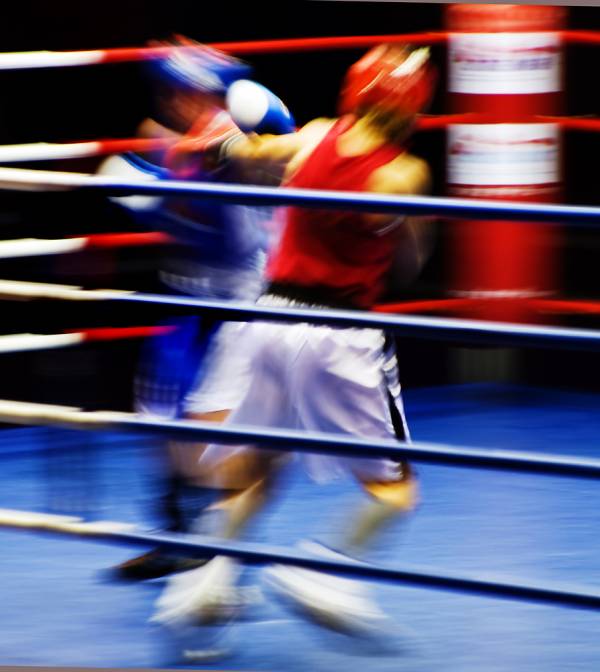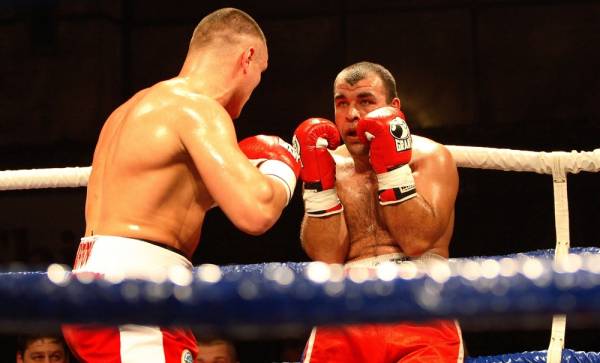In many scenarios in sport and in life we are called to do battle. How do we know what the best way is to prepare? How do we know when we are victorious? The answer isn’t always obvious. A helpful place to start is with how we will be judged.
In some sports a clear winner is established whereas in others we are judged by various criteria, not all of which are easy to define. In sprinting, the first runner across the finish line wins the race pure and simple. However, there are other sports like ice-skating, where the judges pick the winner. In fighting, a fighter who knocks out his opponent is the clear winner, but some fights also go the distance and it is left up to the judges to determine who is the victor.
In boxing, there are four categories in which fighters are judged. These four categories also correlate to many ‘battles’ we fight in life outside the ring. The categories are as follows: aggressiveness, clean punching, defense, and ring generalship. Each category brings rules to live by in preparing for and winning a fight.
Aggressiveness (Heart Matters)
A general rule in fighting is that all things being equal, the more aggressive fighter wins. It’s also generally true all things being equal, the more conditioned fighter typically comes out on top. Aggressiveness and conditioning go hand in hand. Conditioning helps us to be more aggressive because we end up trusting ourselves and developing the will to win.
The same rule applies in other arenas. Mental ‘fitness’ is very much the same way – it’s achieved by repetition and vigilance. The equation is about work ethic and willpower. Those who have the will to win are conscientious workers. Still, there is a downside to aggressiveness, just as there is a difference between real pride and false pride. Someone too aggressive is a fool and a bully. Overly aggressive fighters are easy targets – they beat themselves.
Preparation here is about hard work, pure and simple. If you want to win, you have to outwork your opponent.
Ring Generalship (Tempo Is Everything)
 Another general rule is the fighter who controls the tempo wins the fight. In the business world, negotiating often comes down to tempo and control. Many sports come down to tempo. Ask a golfer.
Another general rule is the fighter who controls the tempo wins the fight. In the business world, negotiating often comes down to tempo and control. Many sports come down to tempo. Ask a golfer.
Success in fighting is about fighting your fight rather than letting your opponent do so. The dominant fighter typically tries to control the center of the ring and declare it his. In doing so he presses his opponent to the ropes and corners him. The phrase ‘on the ropes’ comes from being cornered and in trouble. It is here where fights are won and lost. In this scenario we need to defend, punch, and maneuver our way out to regain control.
Preparation here is about footwork (understanding how to maneuver) and strategy. If you want to win you have to be smarter, quicker, and wiser than your opponent.
Clean Punching (Punch Wisely)
Landing a clean shot is about timing and location. Interestingly judges tend to give this category the most weight when scoring a bout. Why and what does this tell us about fighting and life in general? What it tells us is that the amount of punches we throw doesn’t necessarily matter. Landing them and where we land our punches matters.
The goal in fighting is to take out your opponent. The way you do this is to find where they are vulnerable. As humans, we are all vulnerable on our chin and jaw as well as where our internal organs reside on the body. Snap that jaw or chin violently enough and your opponent is going down. Hit the liver precisely enough and your opponent is done. It’s like the old real estate adage ‘location is everything.’ One clean punch is much more effective than several wasted ones. Punching clean is about awareness and knowing where your opponent is vulnerable so you can assess how to land it with precision.
As in controlling the tempo, landing a clean punch is like an effective move in chess – you have to study the board. Preparation here is about knowledge, study, and repetition. Practice for precision – it’s not the amount of blows that matter, it’s the amount of blows that land that matter.
Defense (Defense Wins Championships)
 I think this is the most underrated category. Most judges tend to give it the least amount of weight. Who can blame them really? People want to see offense in any sport and so it’s rewarded by judges handsomely. Someone who looks aggressive looks like the winner in the minds of most. As noted previously, though, this is not always the case. Furthermore, it is defense that unlocks the key to opening up offensive opportunity. When someone is aggressive and striking, it means they are open somewhere. You cannot have a hand (or foot) away from your body and be protecting that side of your body at the same time. A defensive tactician and effective counter puncher will make a reckless fighter pay.
I think this is the most underrated category. Most judges tend to give it the least amount of weight. Who can blame them really? People want to see offense in any sport and so it’s rewarded by judges handsomely. Someone who looks aggressive looks like the winner in the minds of most. As noted previously, though, this is not always the case. Furthermore, it is defense that unlocks the key to opening up offensive opportunity. When someone is aggressive and striking, it means they are open somewhere. You cannot have a hand (or foot) away from your body and be protecting that side of your body at the same time. A defensive tactician and effective counter puncher will make a reckless fighter pay.
Preparation for defense is about practicing fighting by fighting. The best way to prepare against getting hit is to get hit. Preparation here is also about speed. Speed wins. Ali was a great defensive fighter in that for the first half of his career he was hard to hit because he was faster than his opponents.
In truth, we need to be proficient in all four categories if we are going to win a fight. If we are going to win, it starts and ends with preparation.
In his last fight, the great Manny Pacquiao was at perhaps his most aggressive yet. He also picked an unfortunate opponent to be overly aggressive against. Juan Manuel Marquez is a classic counter puncher and Manny recklessly charged right in to a clean right hand that sent him to the canvas and out cold. A short, clean punch won the fight, using defense as a strategy. Pacquiao was the aggressor and both fighters scored a knockdown in the bout, but Marquez’s knockdown was the only one that mattered.
The four categories teach us that life is a balance. Offense is only works from good defense and vice versa. Controlling the tempo is vital if we are going to land the punches that matter. Aggressive fighters need to learn more defense, and defensive specialists sometimes need to learn to be more assertive – we are ultimately judged on both.
Photos courtesy of Shutterstock.






